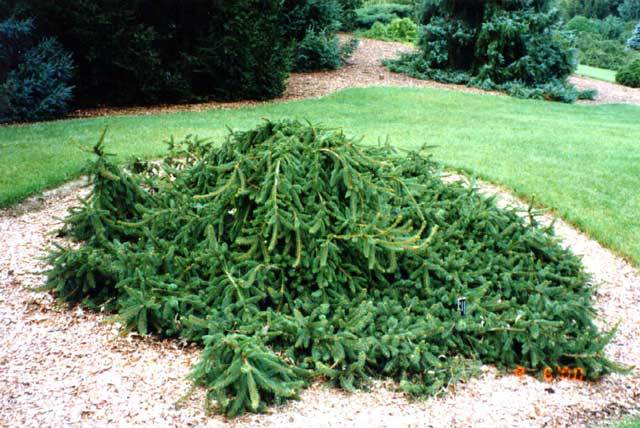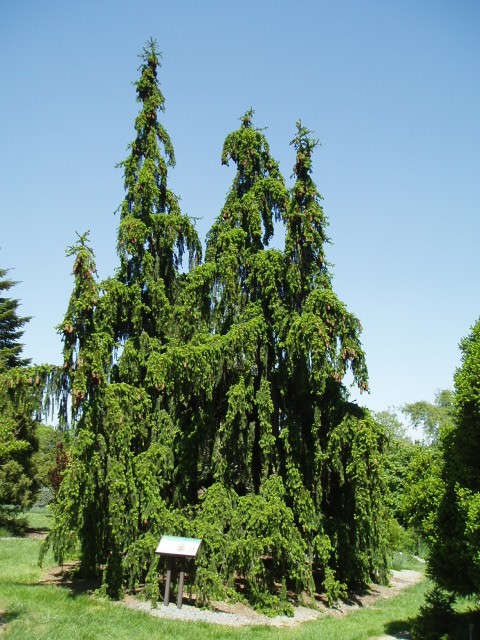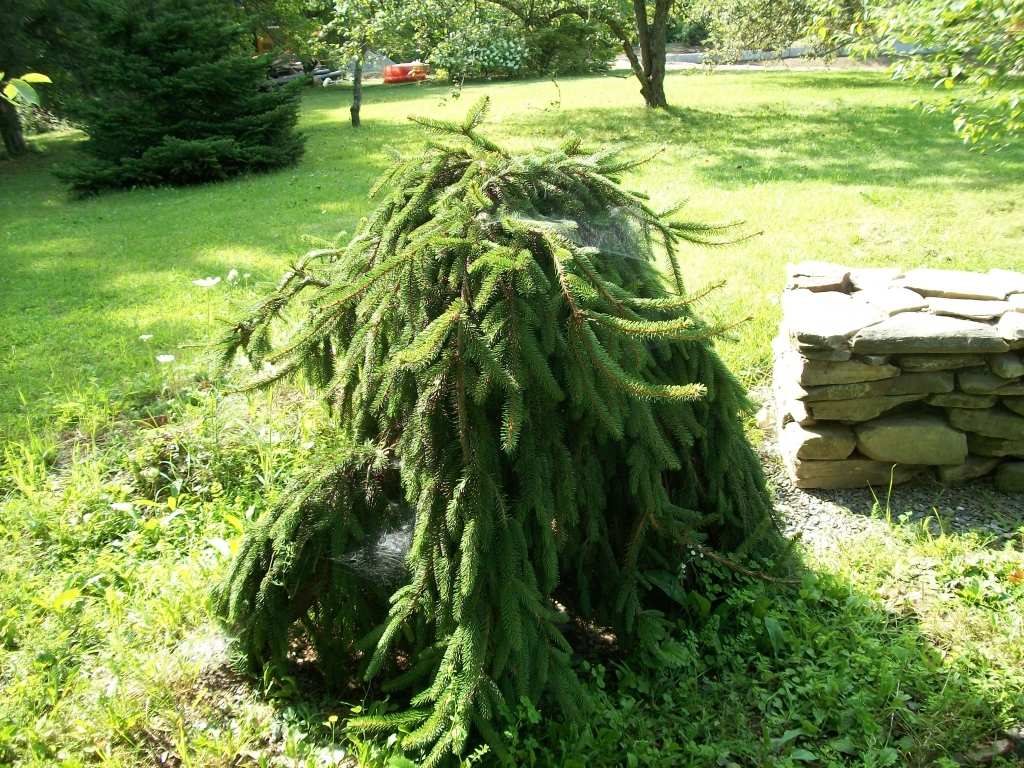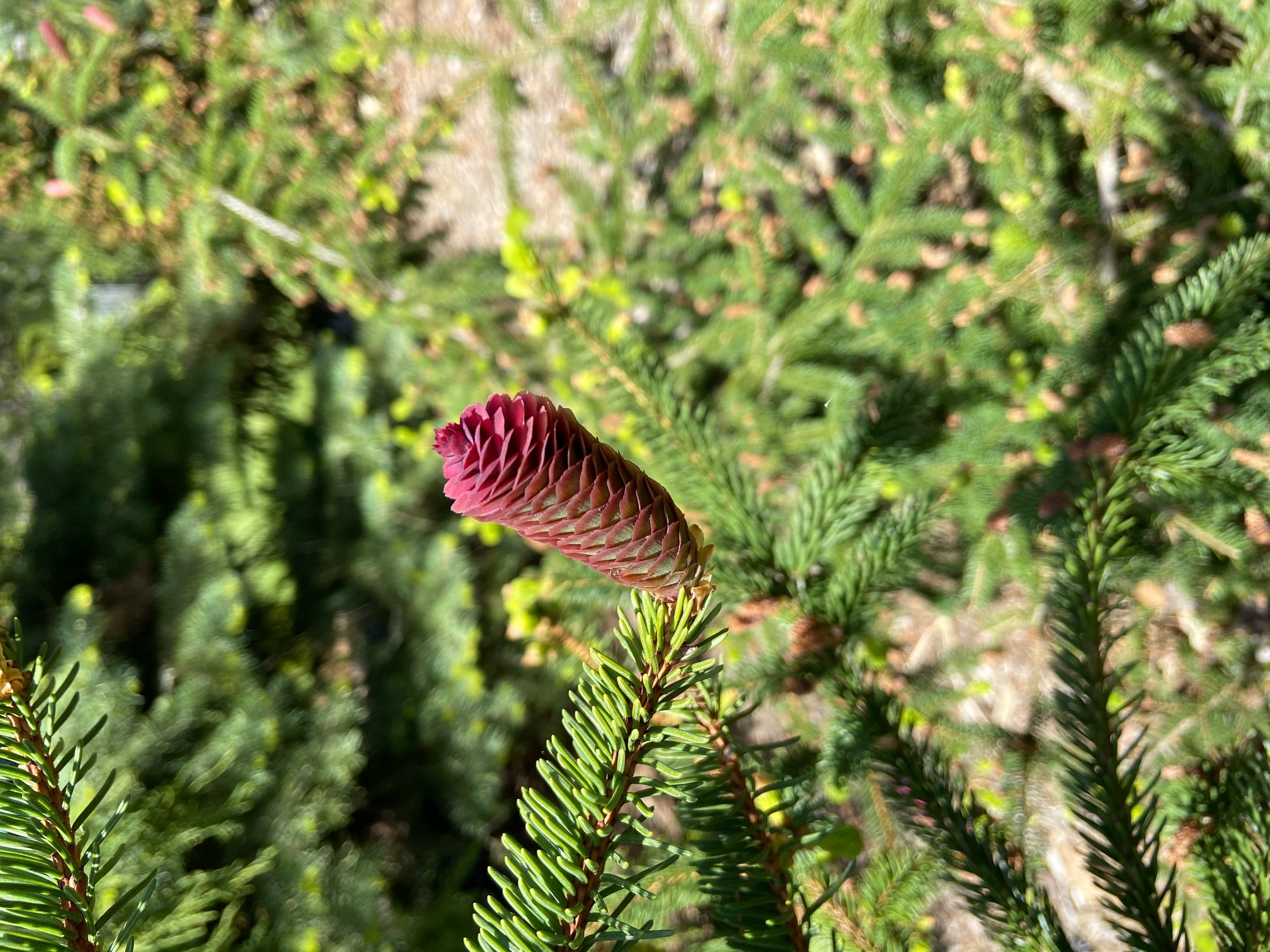Picea abies 'Pendula' is used as a collective term that describes the myriad weeping and pendulous forms of Norway spruce that exist in the international nursery trade. Such plants have been well-known and popular throughout history and no individual clone can be identified as the origin of them all. At some point taxonomists will formally assign these trees under a "form-status," i.e. Picea abies forma pendula. However this has not yet happened. Below are notes from growers and botanical writers.
Literature describes this spruce as hardy to USDA Zone 3. Some ACS members' experiences in zone 3 is that, without protection, during establishment years, some plants will not survive in zone 3. A better upright weeping form of spruce for zone 3 is Picea glauca 'Pendula.' Picea abies 'Pendula' undoubtedly would have better survivability in zone 3 with snow cover when grown as a prostrate ground cover as pictured herein.
Iseli Nursery, Boring, Oregon, USA describes it as "The dark green weeping Norway spruce can be easily grown, staked, and trained into an upright specimen, or allowed to grow as an undulating ground cover, hanging over slopes and walls."
Gerd Krussmann notes in Manual of Cultivated Conifers, that there are so many different cultivars of 'Pendula' in nature that it raises the question of duplication.
Adrian Bloom, in Gardening With Conifers, states that the cultivar Picea abies 'Frohburg' is perhaps the most garden-worthy of the pendula forms. He groups the cultivar 'Pendula' with other similar forms: P. abies 'Frohburg,' P. abies 'Aarburg,' P. abies 'Wartburg,' P. abies 'Inversa' and P. abies 'Reflexa.'



